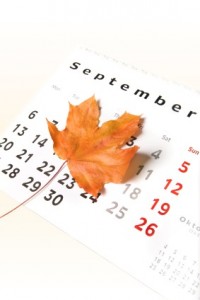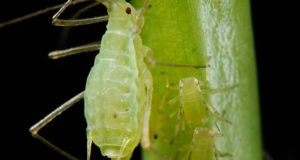 While many of us think only of spring as planting time, there is much gardening to be done throughout fall. Officially, fall begins with the autumnal equinox, but a much better description of fall comes from master gardener Paul James: “… fall weather varies from one part of the country to the next. Basically, the ideal period of fall planting is roughly six weeks before the first hard frost …” That being said, the period of “fall” planting may actually begin in late summer, but in general, “the window of opportunity for most folks is during September and October.
While many of us think only of spring as planting time, there is much gardening to be done throughout fall. Officially, fall begins with the autumnal equinox, but a much better description of fall comes from master gardener Paul James: “… fall weather varies from one part of the country to the next. Basically, the ideal period of fall planting is roughly six weeks before the first hard frost …” That being said, the period of “fall” planting may actually begin in late summer, but in general, “the window of opportunity for most folks is during September and October.
Why plant during fall? The warmth of the soil encourages deep growth of root systems. Roots will continue growing throughout the winter until the ground freezes. In milder regions, roots may continue to grow all winter long. Next spring, as the ground warms, the roots will develop new growth or continue growing at a faster rate while the top growth begins. The same plants planted in spring get a slower start in colder soil therefore their growth lags. When summer gets here, the fall-planted plants are better equipped to deal with heat and drought.
Other reasons for planting during the fall are rainfall, cooler weather, fewer insect problems, and less disease. As another bonus, nurseries and garden centers put plants and seeds on sale to empty their shelves in preparation for both Christmas and next spring’s planting season.
What to Plant Where
Each region brings its own planting guidelines. Below are suggestions for planting in each region in the U.S. and Canada.
Central U.S. / Midwest
- Arugula
- Beets
- Broccoli – transplants
- Brussels sprouts – transplants
- Cabbage – transplants
- Carrots
- Cauliflower – transplants
- Chinese cabbage
- Collard greens
- Kale
- Mustard greens
New England and Mid-Atlantic Region
- Arugula
- Beets
- Broccoli – transplants
- Brussels sprouts – transplants
- Cabbage – transplants
- Carrots
- Cauliflower
- Kale
- Leeks
- Lettuce
- Mache
- Mustard greens
- Peas
- Radishes
- Spinach
- Turnips
North Central U.S. / Rocky Mountains
- Arugula
- Beets
- Kale
- Lettuce
- Mache
- Radishes
- Spinach
- Turnips
Pacific Northwest
- Arugula
- Beets
- Broccoli – transplants
- Brussels sprouts – transplants
- Cabbage – transplants
- Carrots
- Cauliflower
- Cilantro
- Kale
- Lettuce
- Mache
- Mustard greens
- Radishes
- Spinach
- Swiss chard
- Turnips
Southeast / Gulf Coast Region
- Basil
- Beans
- Beets
- Carrots
- Cilantro
- Collard greens
- Cucumbers
- Dill
- Lettuce
- Mustard greens
- Potatoes
- Spinach
- Summer squash
- Turnips
Southwest
- Beans
- Beets
- Broccoli – transplants
- Brussels sprouts – transplants
- Cabbage – transplants
- Carrots
- Cauliflower – transplants
- Cilantro
- Corn
- Cucumbers
- Dill
- Lettuce
- Radishes
- Spinach
- Summer squash – transplants
- Tomatoes – transplants
- Turnips
Spring Bulbs
Before the first freeze, plant hardy bulbs to appear when the weather warms again. Protect bulbs from scavenging rodents by scattering holes with rough gravel before planting or cover bulbs with hardware cloth. Trees, shrubs, perennials, and cool tolerant annuals can be planted also.
Clean Up
Remove spent annuals, vegetables and weeds before the first snow falls. Add healthy ones to the compost pile. They will be added to your garden beds when they have broken down into rich, black soil. Place diseased or insect-infested plants in the trash; leaving them in garden beds encourages insects and diseases to live in your garden. Identify perennials that will remain in beds and cut them down. As long as their roots remain intact, these plants will return year after year. Just cut back, leaving three to four inches above ground.
Take Photos and Make Plans
I know that with all the garden happenings, you may not have taken pictures all summer. So get your camera out and take photos of garden beds and flowerbeds. As you walk through your yard and garden taking pictures, take a notebook and pen along, making notes about the things grown this year and what you would like to grow next year and in years to come. Make sketches of your beds with your notes. Label the perennials that are lying dormant, as this will help you next spring when preparing the ground for planting again. Reflect on the past growing season, noting what worked well and what didn’t. Make notes to help you make next year’s crops better. When you are finished touring your yard and garden, place your notes and pictures in your garden portfolio. Add to your portfolio each year to learn from successive years, and you will be a more productive gardener.
Garden Plan
Using your notes start mapping what you want to plant and where. Then begin researching nutrient, sunshine, and watering requirements needed for these plants. Draw your planting choices into your garden map. This will be your blueprint for next year’s garden. These choices aren’t set in stone, but they will help you make your final decisions when the season starts again. When your blueprint is complete, make a photocopy of it and add to your portfolio and/or scan into your computer for safekeeping.
Soil Testing and Amending
After completing your garden clean up and tour, test the soil in your garden beds. This post-season testing helps you decide how to amend the soil and what to plant in each bed. As each bed had held different plants, each bed will need to be tested to assess its needs. You should test for pH level and nutrient content. After determining the needs of your garden, amend the soil to improve its condition. Organic material like compost, manure, blood meal, and bone meal can be added to soil to make it better for next year’s plants. Top off your bed with three to four inches of mulch or compost – or plant over with “green manure.” Incorporate it into the soil by hand or with a mini garden tiller in the spring. This step also helps protect the roots of plants left to winter over.
Transplanting
Fall is the time to transplant shrubs and trees; the cool weather will help their roots to get established before winter freezes the ground. It will be less stressful for them, as they won’t have to fight heat and can put their energy into putting down deep roots.
Watering
In most areas you need to keep watering, but on a reduced schedule, especially if rain has started. The ground should remain moist but not soggy, as this will cause mold to form. Throughout fall and into winter, your yard and garden should receive an inch of water every two to three weeks. If winter is dry, you might need to water lawns and garden beds to keep them alive until spring.
Prune Lightly
Remove only dead wood to discourage insect infestations. Other than this, give your pruning shears and loppers the fall off. Why? Pruning encourages growth, and you don’t want fragile, new growth on your trees and shrubs going into the dormant winter. There are a few exceptions to this rule, so if you have questions regarding any of your trees and shrubs, call your local agricultural exchange.
Fish and Pond Care
Before cold sets in, do a good cleaning on your pond. Use a net to remove any leaves and debris that have fallen in. Allowing them to decay in the pond will build up nutrients and cause spikes in ammonia levels, which are harmful to your fish. Consider covering a small pond in late fall and through the winter. Another thing to think about is using a bacterial additive in the water – microbes which speed up the decomposition of leaves and fish waste. You may also want to lower the water level by 25 to 50 percent during the winter. Reduce the amount that you feed the fish in your pond, as their metabolisms slow considerably with the onset of colder weather. When the weather drops to 60° think seriously about switching fish food to a low-protein, wheat germ food that is easier for them to digest. When the temperature drops to 50°, you can quit feeding them altogether. They won’t go hungry as their metabolism slows enough that they don’t need to eat when the water temperature continues to drop. Koi and other pond fish will keep eating even when they no longer need to; this can harm or even kill them. So just lay off the food during the winter. You can also turn off the pumps and filters for the winter. This will allow the fish to use the pond’s natural, thermal layers to keep themselves warm by settling to the bottom of the pond and going into near hibernation for winter. Bring the pump and filters inside to check for repairs and tighten any loose fittings. If equipment is in good shape, store it for next spring; if it needs to be replaced, throw it away and choose new parts.
Plant, prepare, and plan for next year. Happy gardening!
©2012 Off the Grid News
 Off The Grid News Better Ideas For Off The Grid Living
Off The Grid News Better Ideas For Off The Grid Living




